Related Research Articles

The Royal Corps of Signals is one of the combat support arms of the British Army. Signals units are among the first into action, providing the battlefield communications and information systems essential to all operations. Royal Signals units provide the full telecommunications infrastructure for the Army wherever they operate in the world. The Corps has its own engineers, logistics experts and systems operators to run radio and area networks in the field. It is responsible for installing, maintaining and operating all types of telecommunications equipment and information systems, providing command support to commanders and their headquarters, and conducting electronic warfare against enemy communications.

Royal Air Force Akrotiri or more simply RAF Akrotiri is a large Royal Air Force station, on the Mediterranean island of Cyprus. It is located in the Western Sovereign Base Area, one of two areas which comprise Akrotiri and Dhekelia, a British Overseas Territory, administered as a Sovereign Base Area.
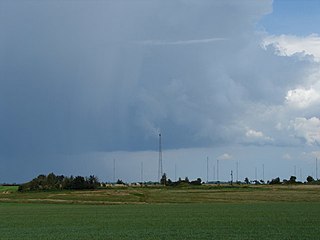
Royal Air Force Digby otherwise known as RAF Digby is Royal Air Force station located near Scopwick and 11.6 mi (18.7 km) south east of Lincoln, in Lincolnshire, England. The station is home to the tri-service Joint Service Signals Organisation, part of Joint Forces Intelligence Group of Joint Forces Command. Other units include the RAF Aerial Erector School, No. 54 Signals Unit and No. 591 Signals Unit.
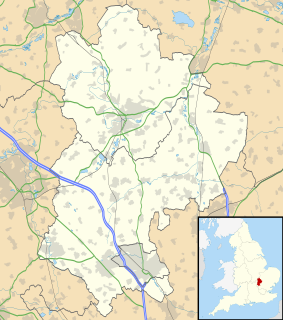
RAF Henlow is a Royal Air Force station in Bedfordshire, England, equidistant from Bedford, Luton and Stevenage. It houses the RAF Centre of Aviation Medicine, the Joint Arms Control Implementation Group (JACIG), the Signals Museum and 616 Volunteer Gliding Squadron. The Ministry of Defence announced on 6 September 2016 that the base is set to be closed following a consultation.

The Armed Forces of Malta is the name given to the combined armed services of Malta. The AFM is a brigade sized organisation consisting of a headquarters and three separate battalions, with minimal air and naval forces. Since Malta is the guardian of the European Union's most southerly border, the AFM has an active role in border control.
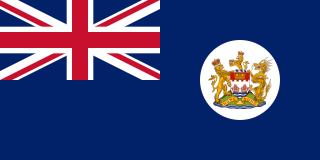
British Forces Overseas Hong Kong comprised the elements of the British Army, Royal Navy and Royal Air Force. The Governor of Hong Kong also assumed the position of the Commander-in-chief of the forces and the Commander British Forces in Hong Kong took charge of the daily deployment of the troops. Much of the British military left Hong Kong prior to the handover in 1997. The present article focuses mainly on the British garrison in Hong Kong in the post Second World War era. For more information concerning the British garrison during the Second World War see the Battle of Hong Kong.

No. 211 Squadron RAF was a squadron in the Royal Air Force active from 1917 to 1919 and from 1937 to 1946. In World War I it operated as a bomber and later a reconnaissance unit on the Western Front. In World War II it operated as a medium bomber unit in the Middle East and Far East and later as a strike fighter unit in the Far East, equipped with, successively, the Bristol Blenheim, the Bristol Beaufighter and de Havilland Mosquito.
No. 108 Squadron RAF was originally a squadron of the Royal Flying Corps during World War I which continued to serve with the Royal Air Force in World War II.
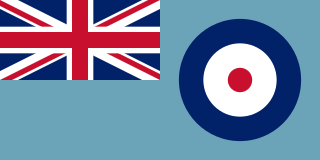
Air Headquarters Malta was an overseas command of the Royal Air Force (RAF) during World War Two. It was established on 28 December 1941 by renaming RAF Mediterranean under Air Vice Marshal Hugh Lloyd. Lloyd was named Air Officer Commanding in Malta on 1 June 1941.
Near East Command was a Command of the British Armed Forces.

No. 96 Squadron was a Royal Air Force squadron. The squadron served on the Western Front during World War II and the Burma Campaign in the South-East Asian Theatre of World War II. No. 96 Squadron served in a variety of roles such as night fighter cover and transportation. It was disbanded in 1959, when its personnel were assigned to No. 3 Squadron.

The 1st Signal Brigade, formally known as the 1st Signal Group was a communications command of the British Army. The group was first formed in 1968 as a result of the 1966 Defence White Paper which expanded support for NATO and the British Army of the Rhine. In 1987 the group was disbanded and merged into the 2nd Signal Brigade.

The Lascaris War Rooms are an underground complex of tunnels and chambers in Valletta, Malta that housed the War Headquarters from where the defence of the island was conducted during the Second World War. The rooms were later used by NATO and are now open to the public as a museum.

The 36th Engineer Regiment is a regiment of the Corps of Royal Engineers within the British Army. The regiment trace their history back to before World War II as the 36th Army Engineer Regiment. The regiment today is a general support engineer regiment provided force support within 12 Engineer Group.

The Royal Malta Artillery (RMA) was a regular artillery unit of the British Army prior to Malta's independence. It was formed in 1889, having been called the Royal Malta Fencible Artillery from 1861 until 1889.
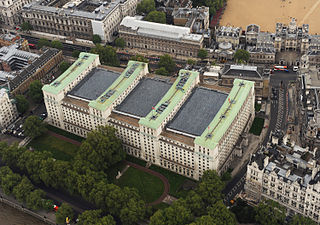
At the end of the Cold War in 1989 the British Armed Forces structure was as follows:

The 9th Signal Regiment (Radio) later Joint Services Signal Unit, Cyprus is a communications unit of the Royal Corps of Signals. The regiment was first formed to supply communications for the troops based in Palestine and Egypt but later provided communications for British Forces Cyprus.

234 Signal Squadron is a specialist signals unit of the Royal Corps of Signals within the British Army. The squadron was formed with the original purpose of provided signals to the Malta Infantry Brigade. Today, the squadron is part of the Joint Service Signal Unit, Cyprus and provides communications to units based in Cyprus for their Operation Tosca deployments.

The 13th Signal Regiment or officially 13th Cyber and Electromagnetic Signal Regiment, is a specialist signals unit of the Royal Corps of Signals within the British Army. Originally being formed in 1934, the regiment had a long history of service before being disbanded in 1994 following the initial Options for Change reforms.

The 15th Signal Regiment is one of four special signal regiments of the British Army's Royal Corps of Signals, and will soon be leaving this role to support the 12th Armoured Infantry Brigade under the Army 2020 Refine concept.
References
- 1 2 3 4 5 Lord, Cliff; Watson, Graham (September 2004). Royal Corps of Signals: Unit Histories of the Corps (1920-2001) and Its Antecedents. Helion & Company Limited. pp. 95–96. ISBN 978-1-874622-92-5 . Retrieved 22 January 2012.
- ↑ "Lascaris War Rooms". Fondazzjoni Wirt Artna / The Malta Heritage Trust. 2014. Retrieved 26 January 2014.
- ↑ "234 Signal Squadron Malta". www.facebook.com. Retrieved 2019-08-15.
| This United Kingdom military article is a stub. You can help Wikipedia by expanding it. |